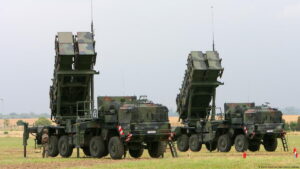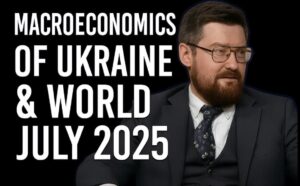
Denmark and Germany have agreed to participate in the new format of arms supplies to Kyiv proposed by US President Donald Trump, while France, Italy, the Czech Republic, and Hungary have refused, Western media reported on Wednesday.
In addition, Bloomberg reported on Wednesday that Europe increasingly feels the need to end its dependence on US weapons.
“Europe is heavily dependent on the US defense industry. However, due to trade tariffs, President Trump’s attitude toward NATO and his lack of commitment to defending the alliance’s countries, European countries will increasingly prioritize investments in their own defense systems,” the agency’s sources said.
According to the European portal Politico, France has refused to participate in the purchase of American weapons for Ukraine. The publication’s sources said that instead, the government intends to focus on increasing its own defense budget, which President Emmanuel Macron promised last weekend to almost double by 2027 compared to the 2017 budget.
In addition, Paris wants to support European manufacturers who previously supplied Ukraine with anti-missile systems and other weapons.
Italy also has no plans to purchase weapons from the US for delivery to Ukraine, but will continue to provide military assistance to Kyiv. Unnamed representatives of the Ministry of Defense told the newspaper La Stampa that there had never been any talks about purchasing American weapons for Kyiv.
In addition, the newspaper notes that Italy does not have the funds to carry out operations of this kind. According to the newspaper’s sources, the problem is so acute that the only purchase from the US planned by Italy for the next ten years is a batch of F-35 fighter jets for its own needs.
The Czech government, in turn, said that military aid to Kyiv would continue, but through participation in other initiatives and purchases from Czech, not American, manufacturers.
Hungarian Foreign Minister Péter Szijjártó said that Budapest does not intend to participate in the purchase of American weapons for Ukraine.
Berlin and Copenhagen have so far given their official consent to purchase weapons from the US. Danish Foreign Minister Lars Rasmussen said he was fully prepared to join the funding.
The Dutch Foreign Ministry, in turn, said it was considering participating in the program. However, despite the government’s positive assessment of the initiative, Amsterdam has not yet confirmed its commitment to direct participation.
According to NATO Secretary General Mark Rutte, Sweden, Norway, and the United Kingdom are also expected to join the funding.
On July 11, Trump announced that US NATO allies would purchase weapons from Washington, which could then be transferred to Ukraine.
During a press conference with Trump on Monday, Rutte called it “logical” that European countries would pay for US arms deliveries to Ukraine.
European diplomacy chief Kaja Kallas said on Tuesday that EU countries would prefer Washington to provide part of its military aid to Ukraine free of charge. “If we pay for these weapons, it means that we, not the US, are providing this military aid,” Callas said at a press conference in Brussels. She stressed that Brussels “would like to see these costs shared.”

Ukraine’s nominal gross domestic product (GDP) amounted to UAH 1 trillion 923.1 billion in the first quarter of 2025, the State Statistics Service reported on Tuesday.
It confirmed the estimate of real GDP growth of 0.9% by the first quarter of 2024.
In addition, according to the State Statistics Service, the change in the deflator in the first quarter of this year was 16.9%, while in the fourth quarter of last year it was 12.8%.
As reported, in the IMF macroeconomic forecast updated in late June, the estimate of Ukraine’s nominal GDP in 2025-2027 was increased by about UAH 150 billion due to the revised GDP deflator from 12% to 13.5% this year: UAH 8.87 trillion this year, UAH 10.19 trillion next year, and UAH 11.32 billion in 2027.
In April, the NBU lowered its expectations for Ukraine’s economic growth this year to 3.1% from 3.6% in its previous January macroeconomic forecast, and from 4.0% to 3.7% in the next year.
According to the State Statistics Service, Ukraine’s real gross domestic product (GDP) growth slowed to 2.9% in 2024 from 5.5% in 2023. In the fourth quarter of 2024, the country’s GDP decreased by 0.1% compared to the corresponding quarter of 2023.
According to the State Statistics Service, Ukraine’s nominal GDP last year amounted to UAH 7 trillion 658.7 billion, with a change in the deflator of 12.3%, including UAH 2 trillion 194.4 billion in the fourth quarter, with a change in the deflator of 12.8%.

Germany’s central bank does not expect the country’s GDP to grow in April-June 2025 after an unexpected rise in the first quarter. The economy has “probably stagnated” and the underlying trend is still characterized as “generally weak,” according to the Bundesbank’s monthly report.
The central bank warned that the introduction of 30% import duties recently announced by US President Donald Trump would create a “significant risk of economic decline.”
“In the short term, Germany’s export industry will face additional obstacles in the form of US tariff policy,” the Bundesbank said in a report.
Germany’s economy grew by 0.4% in the first quarter of 2025 compared to the previous three months. The GDP growth rate was the highest since the third quarter of 2022. However, this increase is largely due to attempts by businesses and exporters to get ahead of US duties.
Preliminary data on the dynamics of Germany’s GDP in the second quarter will be published on July 30.
Earlier, the Experts Club information and analytical center made a video analysis of the prospects for the Ukrainian and global economies, see more in the video – https://youtu.be/kQsH3lUvMKo?si=F4IOLdLuVbYmEh5P

A studio of comfortable lingerie by the Ukrainian brand brabrabra is scheduled to open in the capital’s Ocean Mall, the company’s press service reports.
“The brabrabra brand encourages everyone to choose themselves and comfortable underwear for themselves soon in a new studio at the Ocean Mall. This location will provide more opportunities to see the maximum variety of lingerie and leisurewear collections – completely different designs, fabrics and comfortable designs that guarantee a sense of comfort for everyone,” the press release says.
The studio will be located on 65 square meters. It is noted that the brabrabra brand has a wide range of sizes, from A to J and from XS to 4XL, which covers more than 90% of women’s bra requests. Professional brafitters from the brand’s team will help you determine the right size and choose comfortable underwear.
Ocean Mall is a retail resort shopping center. The total area is 300 thousand square meters and has a parking lot for 4 thousand cars. The mall has 800 shops and 50 restaurants. Among the largest tenants are Silpo grocery supermarket, flagship stores of the world’s largest retailers in the segments of fashion, sports, and home furnishings. More than 30 thousand square meters in Ocean Mall are dedicated to entertainment, including the Galaxy amusement park for the whole family and a seven-screen multiplex cinema.

The European pharmaceutical association Medicines for Europe, the Ministry of Health, and the Association of Ukrainian Pharmaceutical Manufacturers (AVLU) have signed a memorandum of partnership in the field of critical medicines. The memorandum was signed on the sidelines of the Ukraine Recovery Conference (URC2025) in Rome last week.
According to Adrian Van Den Goevaert, CEO of Medicines for Europe, Ukraine’s participation in the Critical Medicines Alliance and its experience in sharing responses, together with regulatory integration into EU systems based on alignment with EU technical and procedural rules, anti-corruption measures, the creation of an independent medicines agency in Ukraine, and mutual recognition of GMP certificates are becoming key priorities for EU-Ukraine pharmaceutical cooperation.
For his part, Anatoliy Reder, CEO of the pharmaceutical company Interchem (Odessa), noted that the memorandum will enable Ukrainian pharmaceutical companies to participate in the production of active pharmaceutical ingredients (APIs) for EU countries.
“The memorandum shows that Ukraine is highly developed in the field of pharmaceutical production and is ready to participate in supplying critical medicines to EU countries. We already have certain positions from the list of critical medicines and can very quickly ensure the production of the rest. We can produce APIs in the quantities required by the EU,” he said.
According to Reder, the production of APIs and drugs from the critical list will be convenient for both Ukraine and the EU.
“Ukraine has a highly developed and modern production control system. The requirements for the production of medicines in Ukraine are sometimes higher than in European countries, so we can ensure reliable supplies of high-quality products,” he said.
At the same time, Reder noted that in order to launch a project for the production of critical medicines, European manufacturers need support from European official bodies so that they can include Ukrainian production sites in their dossiers as additional sources of APIs.
Medicines for Europe, MEMORANDUM, Ministry of Health, PARTNERSHIP, PHARMACEUTICAL MANUFACTURERS

In 2025, the 10-year period of cooperation between Nova Poshta and CEO Oleksandr Bulba ends, the company’s press service reports.
It is noted that under Bulba’s leadership, the company has achieved the most ambitious results.
“Between 2015 and 2025, Nova Poshta increased its annual delivery volume from 93 million to 500 million (as planned for the end of 2025). By the end of this year, the company’s network will cover 50 thousand service points across the country, 25 times more than at the beginning of cooperation with Bulba. Parcels in Ukraine are consistently delivered in less than 24 hours, and the international business is showing steady growth.
The press release emphasizes that the period of full-scale war deserves special attention. Despite the mobilization of the team, constant attacks on infrastructure and destroyed logistics routes, the company not only maintained its stability but also continued to develop, introduce new services and support the country’s economy.
“The success of Nova Poshta is the result of the consistent work of the CEO and the large team he led. For many years in a row, Oleksandr Bulba has been recognized as one of the most effective leaders in Ukraine. At the same time, any success comes at a price, and even the most successful projects need a fresh look. That’s why the company’s co-owners, together with Oleksandr, made a joint decision: 2025 will be his final year as CEO of
Nova Poshta. Until the end of the year, Bulba will continue to lead the company, focusing on the implementation of the approved development strategy,” the release said.
Thus, on December 31, 2025, Nova Poshta will have a new CEO. The co-owners and the Supervisory Board express their deep gratitude to Bulba for the years of fruitful cooperation and his invaluable contribution to the company’s development.